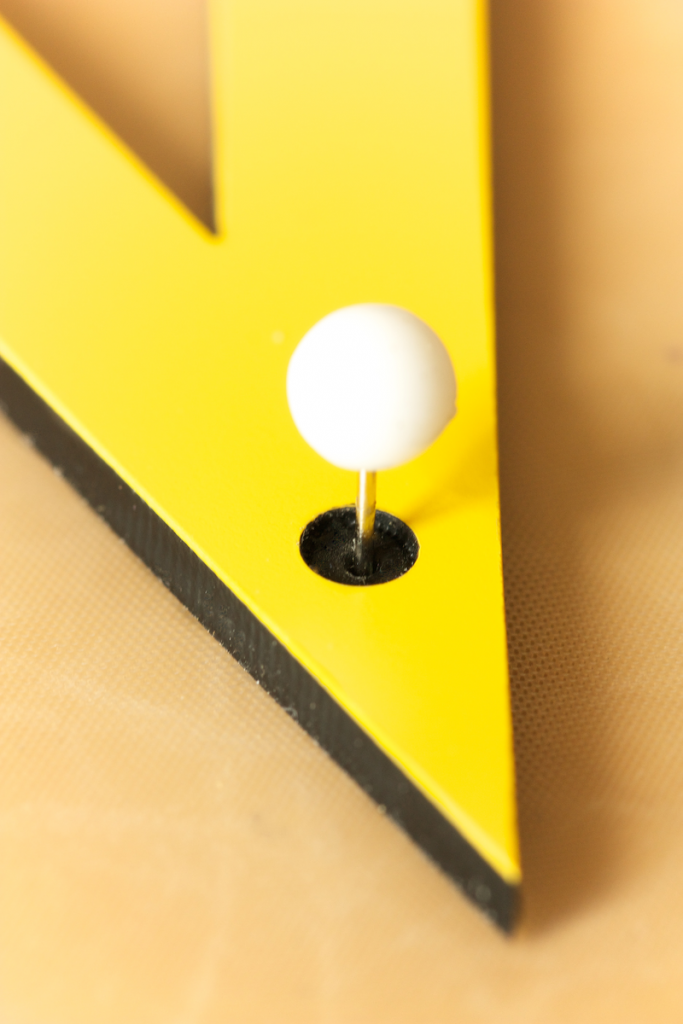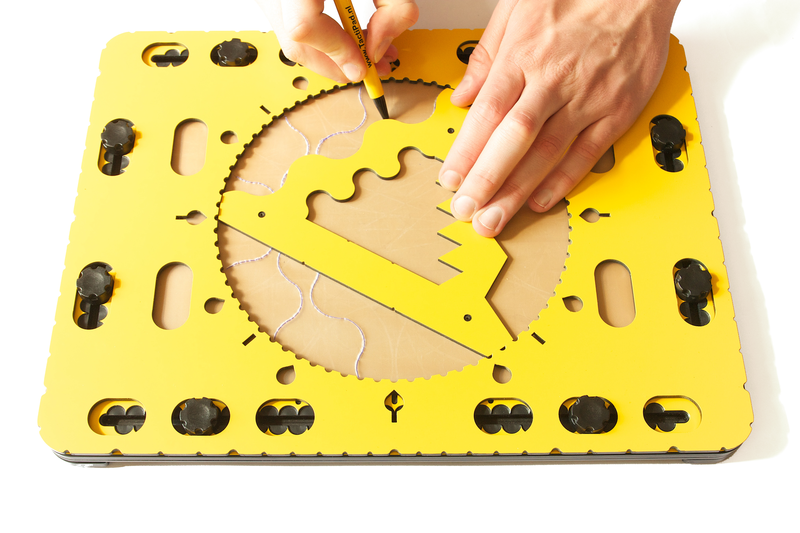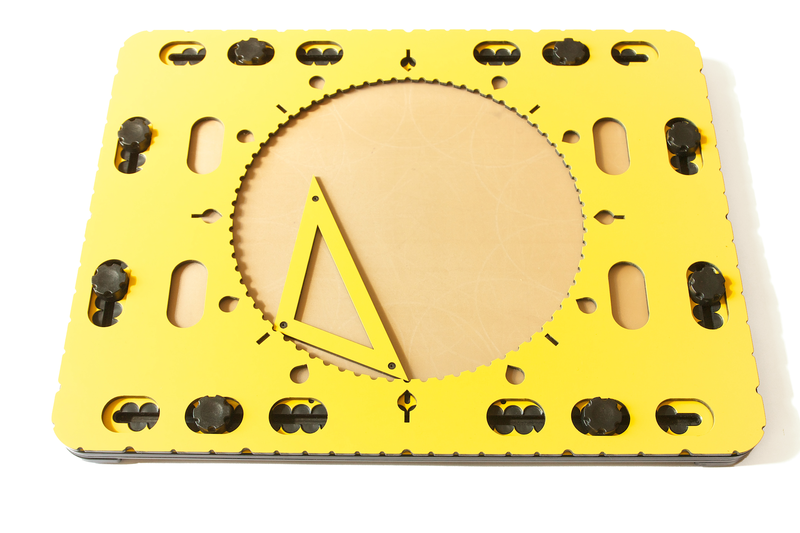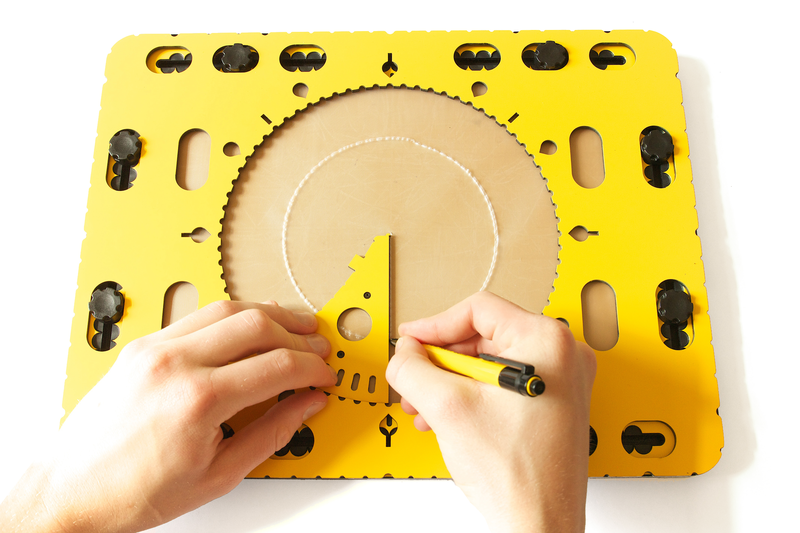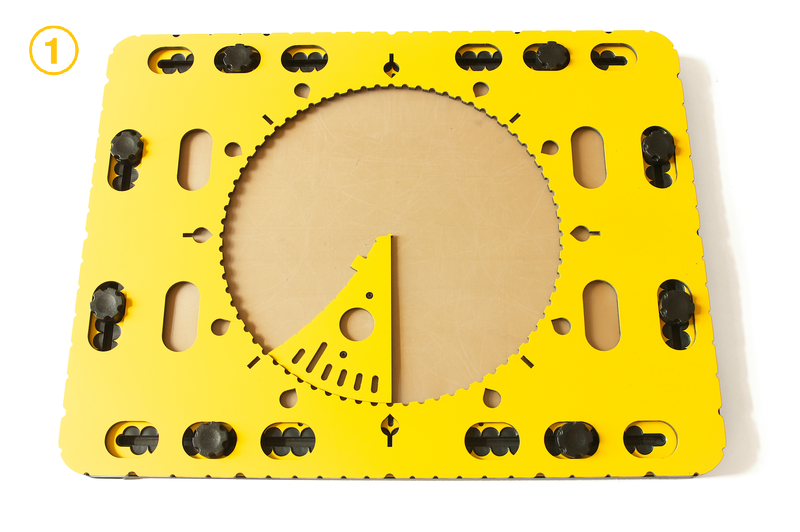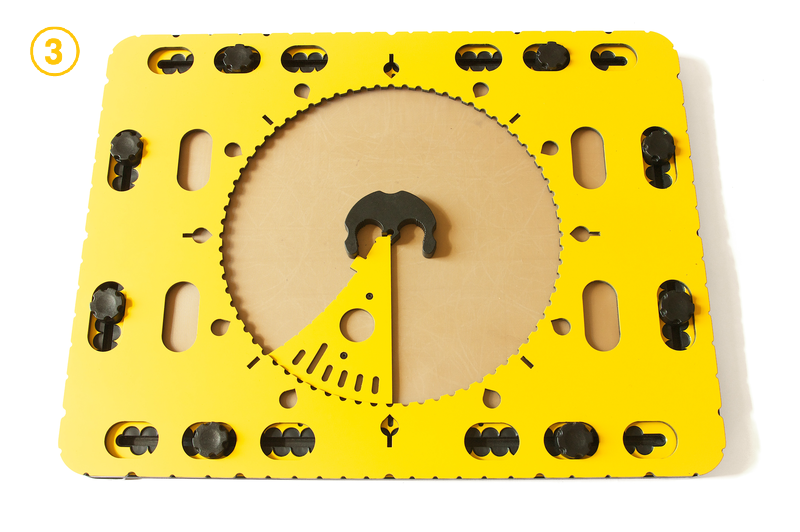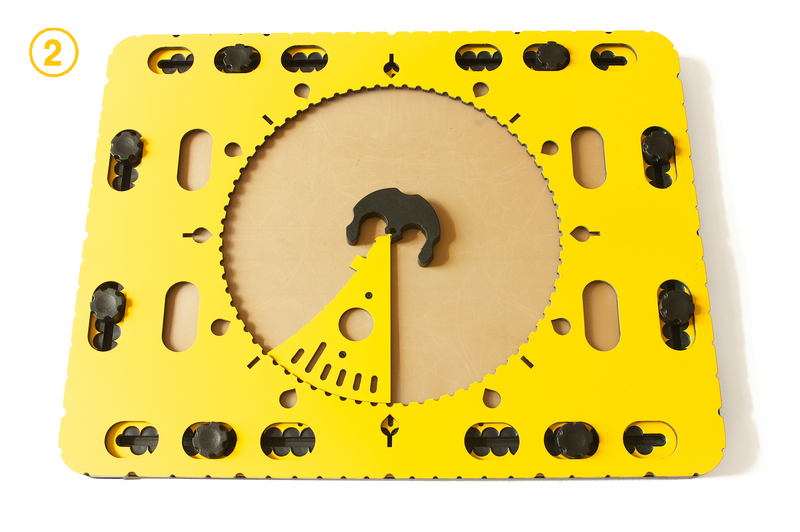The CircleFrame is one of the smart accessories for the TactiPad. Besides regular freehand drawings, the CircleFrame enables you to make drawings in which circles have the main focus.
Draw beautiful repeating patterns, pie charts, clocks with hour and minute hands or mathematical functions with ease. You can use the **zigzag triangle, the **small triangle or **wedge tool as one of the three tools to create your objects in the circle of the Circle Frame.
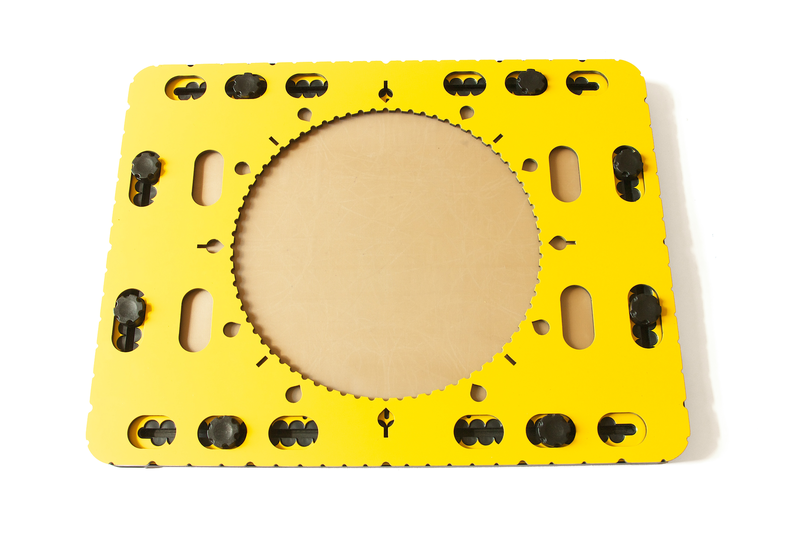
Figure 1. CircleFrame positioned on the buttons of the TactiPad.
Details of the CircleFrame
In the middle of the CircleFrame is a large circle with a diameter of 20 centimeters. This is the actual drawing area for your drawings. Along the edge of this circle you find clear tactile markings every five degrees which form a large protractor. When using the drawing tools, they can be aligned with the edge of this circle.
Around the outside of the circle there are extra markings: a teardrop shape for every 30 degrees, a line for every 45 degrees, or a combination of both where they coincide at 0, 90, 180 and 270 degrees.
In the outer edge of the CircleFrame, notches are made which, seen from the center of the circle, lie on the same line as the degree markings along the inner edge of the circle.
Because the circle is exactly in the middle of the circle frame, the frame is horizontally and vertically symmetrical. Therefore, there is no difference in shape between the yellow and black side. The orientation of the CircleFrame on the TactiPad therefore needs no consideration.
Slots in the outer part of the CircleFrame fit over the eight adjustable buttons on the TactiPad. Place these buttons five centimeters from the corners of the drawing surface. The CircleFrame can then be placed in three different positions: in the middle of the drawing board with the edges coinciding with those of the TactiPad, or in two positions left and right of the center.
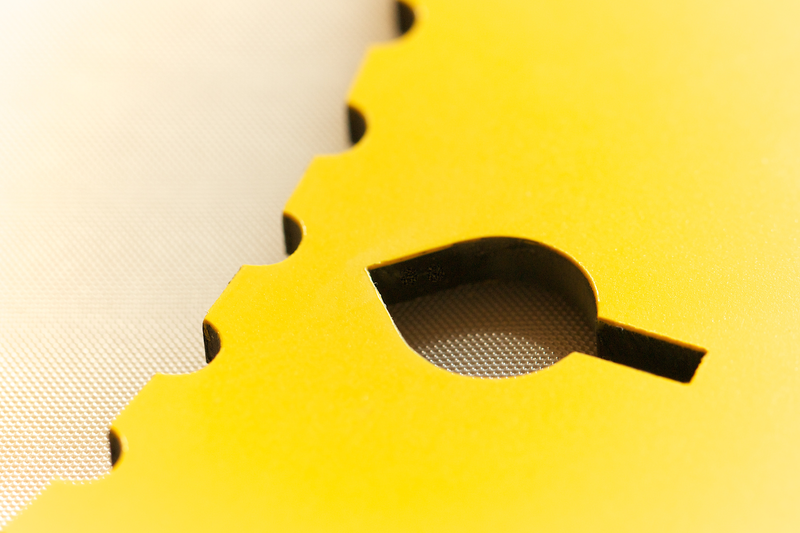
Figure 2. Indications run along the edge of the circle: small indents for every 5 degrees, drop-shaped ones every 30 degrees.

 This is the first section
This is the first section Return to CircleFrame manual overview
Return to CircleFrame manual overview
